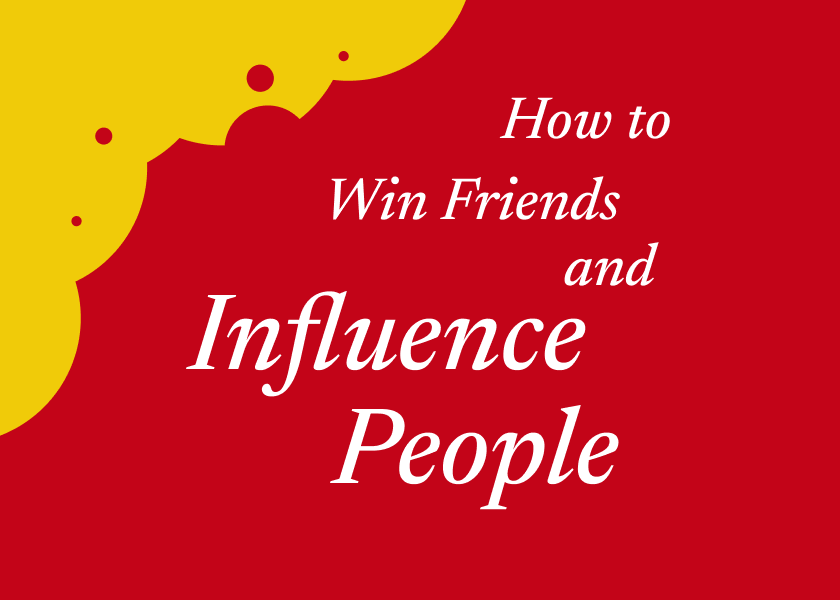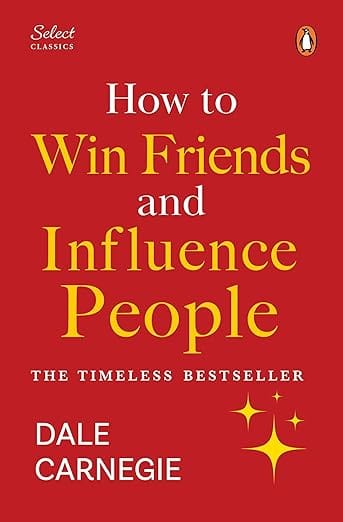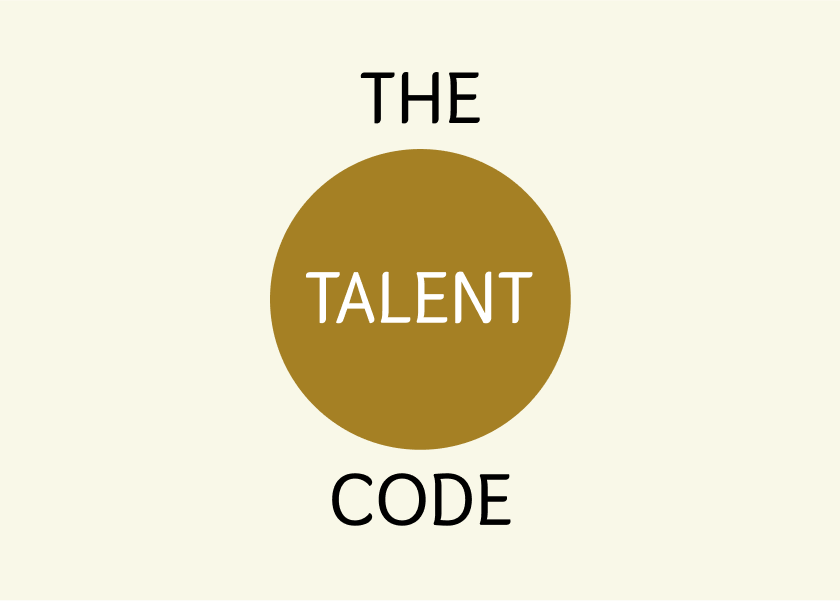How to Win Friends and Influence People by Dale Carnegie - Summary
This book is not just a self-improvement book; it invented the genre! Dale Carnegie's timeless principles will teach you how to make friends and work with people. Through practical advice and real-life examples you'll be empowered to achieve a richer, happier, and more fulfilling life!

This is a summary of the book How to Win Friends and Influence People by Dale Carnegie.
Listen to ShelfHelp's podcast about this book.
Unlock Your People Skills: A Summary of "How To Win Friends and Influence People"
Do you struggle to connect with people? Do you wish you could be more persuasive and influential? These are universal desires, and for nearly a century, Dale Carnegie's How To Win Friends and Influence People has been the go-to guide for anyone seeking to improve their social skills and achieve greater success in life. This summary will give you a clear understanding of the book's key principles and how to apply them in your own life.
Table of Contents
- About the author
- Who should read this book?
- Key insights and themes
- Detailed summary
- Review
- Actionable Takeaways
- FAQs
- Conclusion
About the Author
Dale Carnegie (1888-1955) was an American writer, lecturer, and developer of famous self-improvement courses. He was a pioneer in the field of human relations and public speaking. His book, How To Win Friends and Influence People first published in 1936, became an instant bestseller and remains one of the best-selling self-help books of all time. Carnegie's enduring popularity stems from his ability to present practical, actionable advice in a clear and engaging style.
Who Should Read This Book?
This book is for anyone who wants to improve their relationships, both personal and professional. Whether you're a student, a businessperson, a parent, or simply someone who wants to be more likeable and persuasive, this book has something to offer you.
Here are some examples of people who could benefit from reading the book:
- Professionals seeking career advancement
- Salespeople aiming to increase their sales
- Leaders wanting to build stronger teams
- Parents hoping to improve their relationships with their children
- All of us looking to make new friends and build stronger relationships
Key Insights and Themes
Here are the biggest lessons from How to Win Friends and Influence People:
- Focus on others, not yourself. The key to winning friends and influencing people is to become genuinely interested in other people and their needs.
- Criticism is counterproductive. Instead of criticising, condemning, or complaining, focus on understanding and appreciating others.
- Arouse an eager want. People are more likely to do what you want if you can show them how it will benefit them.
- Remember names and use them. People feel valued and respected when you remember and use their names.
- Be a good listener. Encourage others to talk about themselves and their interests.
- See things from the other person's perspective. Understanding another person's point of view is essential for building strong relationships.
- Appeal to nobler motives. People are more likely to respond positively if you appeal to their best selves.
- Dramatise your ideas. Make your ideas come alive by using stories, examples, and visuals.
- Throw down a challenge. People are motivated by the opportunity to achieve something difficult.
- Praise and encourage, don't criticise. Focus on people's strengths and encourage their growth.
Detailed Summary
How To Win Friends and Influence People is divided into four parts, each focusing on a specific aspect of human relations:
Part 1: Fundamental Techniques in Handling People
This section lays the foundation for building positive relationships.
- Don't criticise, condemn, or complain. Criticism rarely achieves the desired results and often creates resentment. Instead of focusing on faults, try to understand why people behave the way they do.
- Give honest and sincere appreciation. Everyone craves appreciation and recognition. Make an effort to find something genuine to praise in others.
- Arouse in the other person an eager want. Focus on what others want and show them how to achieve it. By understanding their desires and motivations, you can more effectively persuade and influence them.
Part 2: Six Ways to Make People Like You
This section focuses on building rapport and creating positive first impressions.
- Become genuinely interested in other people. Show a sincere interest in others' lives, work, and hobbies. Ask questions, listen attentively, and remember details.
- Smile. A smile is a universal symbol of friendliness and approachability. It instantly makes you more likable.
- Remember that a person's name is to that person the sweetest and most important sound in any language. Use people's names frequently in conversation to show that you value them.
- Be a good listener. Encourage others to talk about themselves. People love to talk about themselves. By being a good listener, you can build rapport and make people feel important.
- Talk in terms of the other person's interests. Find common ground and engage in conversations that are relevant to the other person.
- Make the other person feel important – and do it sincerely. Everyone wants to feel valued and appreciated. Make an effort to make people feel good about themselves.
Part 3: How to Win People to Your Way of Thinking
This section provides strategies for persuasion and influence.
- The only way to get the best of an argument is to avoid it. Arguments rarely change anyone's mind and often damage relationships. Instead, seek common ground and focus on finding solutions.
- Show respect for the other person’s opinions. Never say, “You’re wrong.” Invalidating someone's opinion immediately puts them on the defensive. Instead, acknowledge their perspective and try to understand their reasoning.
- If you are wrong, admit it quickly and emphatically. Admitting your mistakes builds trust and makes it easier to resolve disagreements.
- Begin in a friendly way. A positive and friendly approach is more likely to win people over than a confrontational one.
- Get the other person saying “yes, yes” immediately. Start by finding points of agreement to create a positive and receptive mindset.
- Let the other person do a great deal of the talking. People are more likely to be persuaded if they feel they have been heard.
- Let the other person feel that the idea is his or hers. People are more likely to support ideas they believe they came up with.
- Try honestly to see things from the other person’s point of view. Understanding the other person's perspective helps you to tailor your arguments and find mutually beneficial solutions.
- Be sympathetic with the other person’s ideas and desires. Show empathy and understanding, even if you don't agree with the other person's perspective.
- Appeal to the nobler motives. Frame your requests in a way that aligns with the other person's values and aspirations.
- Dramatize your ideas. Use stories, examples, and visuals to make your ideas more engaging and memorable.
- Throw down a challenge. Motivate people by appealing to their competitive spirit and desire for achievement.
Part 4: Be a Leader: How to Change People Without Giving Offense or Arousing Resentment
This section focuses on effective leadership and inspiring others to change.
- If you must find fault, this is the way to begin. Start with praise and honest appreciation before addressing areas for improvement.
- Call attention to people’s mistakes indirectly. Subtly point out errors without directly criticizing or blaming.
- Talk about your own mistakes before criticizing the other person. Acknowledging your own fallibility makes it easier for others to accept their mistakes.
- Ask questions instead of giving direct orders. Encourage collaboration and buy-in by involving others in the decision-making process.
- Let the other person save face. Preserve people's dignity by avoiding public criticism and allowing them to maintain their self-respect.
- Praise the slightest improvement and praise every improvement. Be ‘hearty in your approbation and lavish in your praise.’ Positive reinforcement encourages continued growth and improvement.
- Give the other person a fine reputation to live up to. Set high expectations and express confidence in people's ability to meet them.
- Use encouragement. Make the fault seem easy to correct. Create a supportive environment where people feel empowered to improve.
- Make the other person happy about doing the thing you suggest. Frame your requests in a way that highlights the benefits to the other person and creates a win-win situation.
Review
How To Win Friends and Influence People is a classic for a reason. It offers timeless wisdom and practical advice that can benefit anyone. The book's strengths lie in its simplicity, clarity, and abundance of real-life examples. Carnegie's engaging writing style makes even complex concepts easy to understand and apply.
However, some critics argue that the book's advice can be seen as manipulative or insincere if applied incorrectly. It's important to remember that the goal is to build genuine relationships, not to use tricks or shortcuts to get what you want.
Actionable Takeaways
Here's how you can apply these lessons in your own life:
- Practice active listening. Pay attention to what others say, ask clarifying questions, and reflect back their feelings.
- Make a conscious effort to remember names. Repeat the name back to the person when you first meet them, and use it throughout the conversation.
- Look for opportunities to offer genuine praise and appreciation. Focus on people’s strengths and acknowledge their efforts.
- Before criticizing, consider the other person's perspective. Try to understand why they might be behaving the way they are.
- Frame your requests in a way that highlights the benefits to the other person. Create win-win situations that leave everyone feeling good.
FAQs
- What is "How To Win Friends and Influence People" about? This book teaches you the principles of building strong relationships, winning people over, and becoming a more effective leader. It provides practical advice and real-life examples to help you improve your social skills and achieve greater success in life.
- Is "How To Win Friends and Influence People" worth reading? Yes, this book is a timeless classic for a reason. Its principles are relevant today and can help you improve your interactions with others. While some might consider some of the advice outdated, the core principles are still applicable and can significantly improve your personal and professional life.
Conclusion
How To Win Friends and Influence People is a powerful guide to improving your social skills and achieving greater success in all areas of life. By applying the principles outlined in this book, you can build stronger relationships, become more persuasive, and create a more fulfilling life for yourself and those around you.
As an Amazon Associate, Shelfhelp may earn money from qualifying purchases. Needless to say, Shelfhelp only includes affiliate links to books we recommend and think are worth your time reading.




